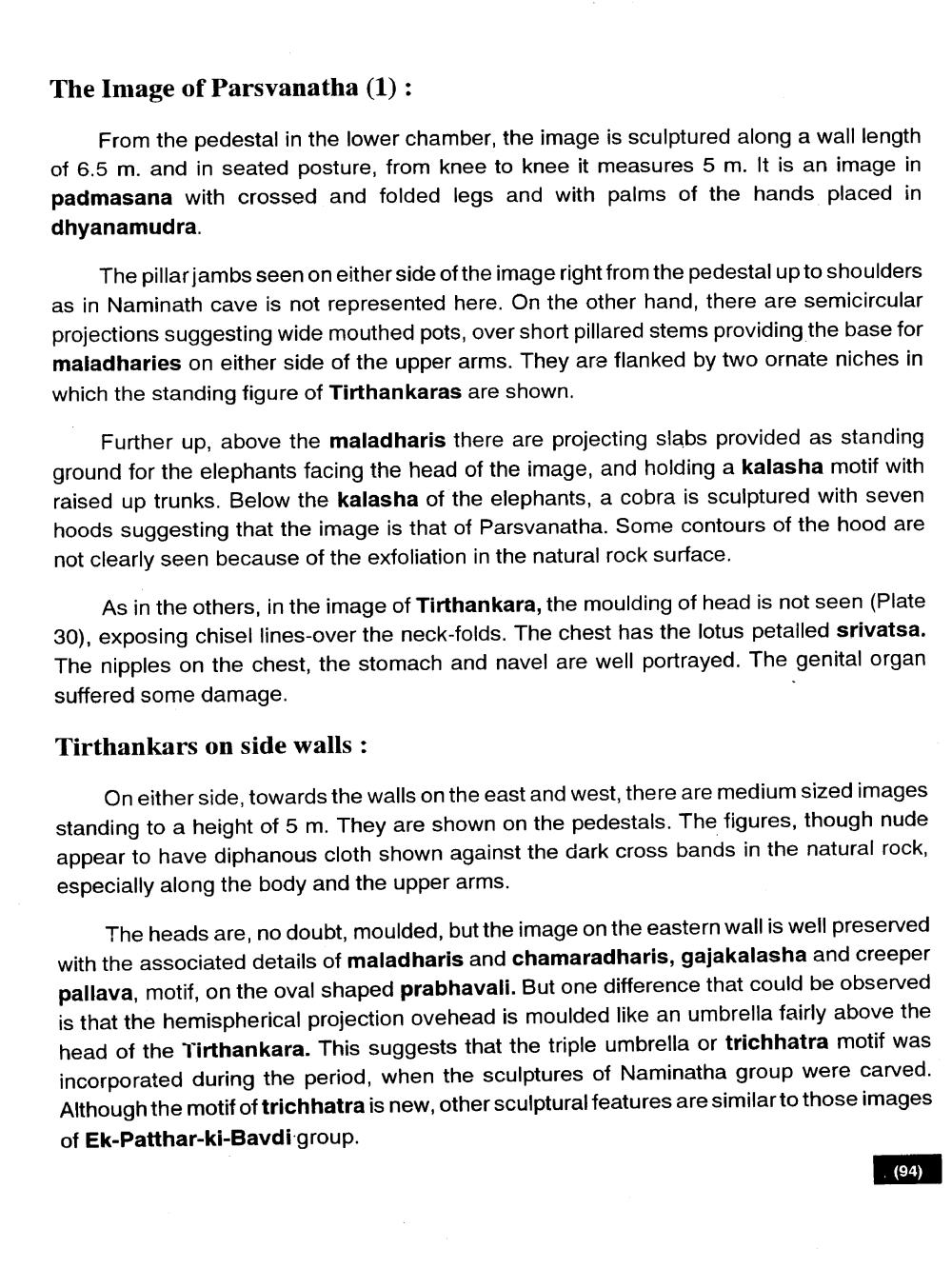________________
The Image of Parsvanatha (1):
From the pedestal in the lower chamber, the image is sculptured along a wall length of 6.5 m. and in seated posture, from knee to knee it measures 5 m. It is an image in padmasana with crossed and folded legs and with palms of the hands placed in dhyanamudra.
The pillarjambs seen on either side of the image right from the pedestal up to shoulders as in Naminath cave is not represented here. On the other hand, there are semicircular projections suggesting wide mouthed pots, over short pillared stems providing the base for maladharies on either side of the upper arms. They are flanked by two ornate niches in which the standing figure of Tirthankaras are shown.
Further up, above the maladharis there are projecting slabs provided as standing ground for the elephants facing the head of the image, and holding a kalasha motif with raised up trunks. Below the kalasha of the elephants, a cobra is sculptured with seven hoods suggesting that the image is that of Parsvanatha. Some contours of the hood are not clearly seen because of the exfoliation in the natural rock surface.
As in the others, in the image of Tirthankara, the moulding of head is not seen (Plate 30), exposing chisel lines-over the neck-folds. The chest has the lotus petailed srivatsa. The nipples on the chest, the stomach and navel are well portrayed. The genital organ suffered some damage.
Tirthankars on side walls :
On either side, towards the walls on the east and west, there are medium sized images standing to a height of 5 m. They are shown on the pedestals. The figures, though nude appear to have diphanous cloth shown against the dark cross bands in the natural rock, especially along the body and the upper arms.
The heads are, no doubt, moulded, but the image on the eastern wall is well preserved with the associated details of maladharis and chamaradharis, gajakalasha and creeper pallava, motif, on the oval shaped prabhavali. But one difference that could be observed is that the hemispherical projection ovehead is moulded like an umbrella fairly above the head of the Tirthankara. This suggests that the triple umbrella or trichhatra motif was incorporated during the period, when the sculptures of Naminatha group were carved. Although the motif of trichhatra is new, other sculptural features are similar to those images of Ek-Patthar-ki-Bavdi group.
(94)




